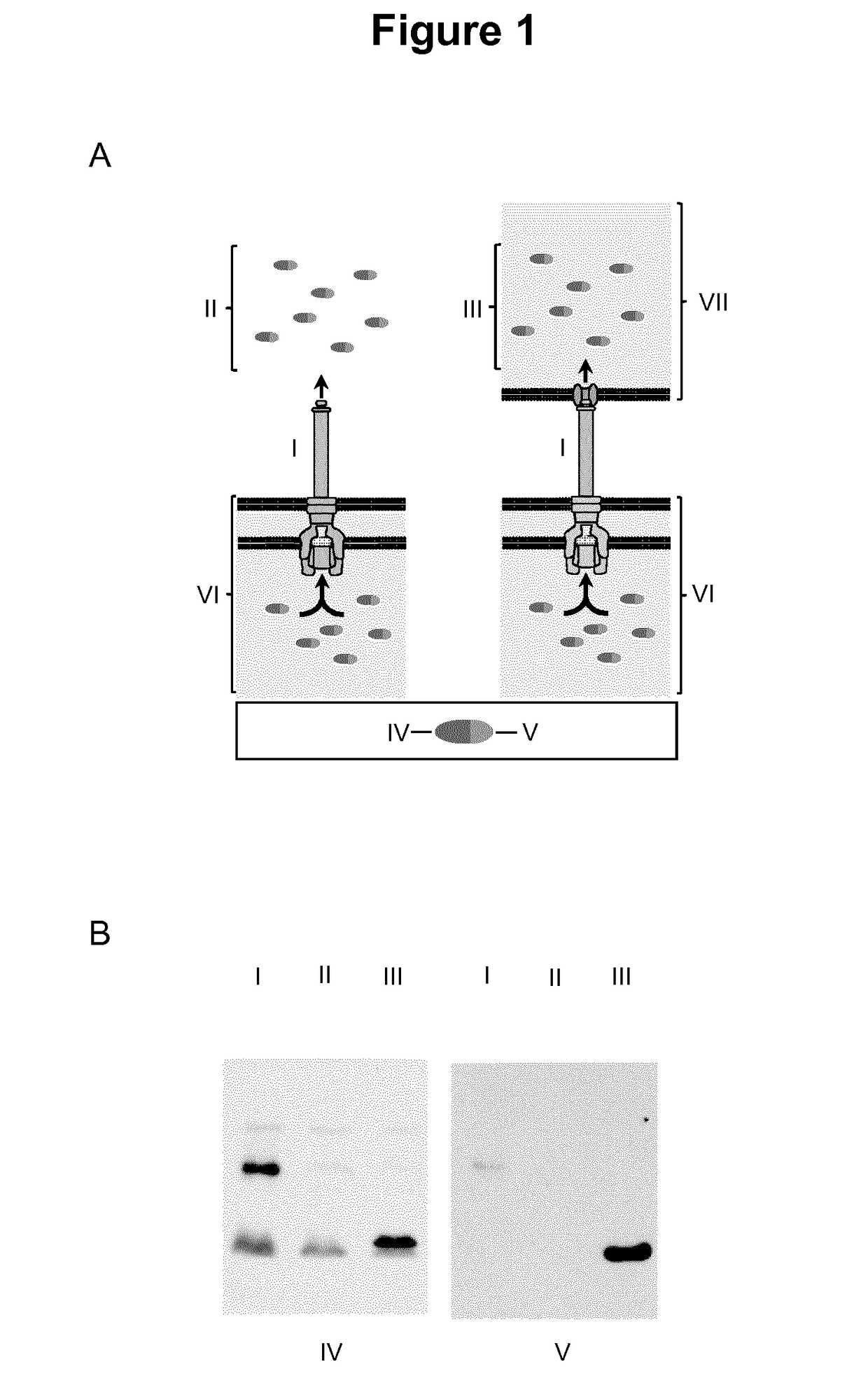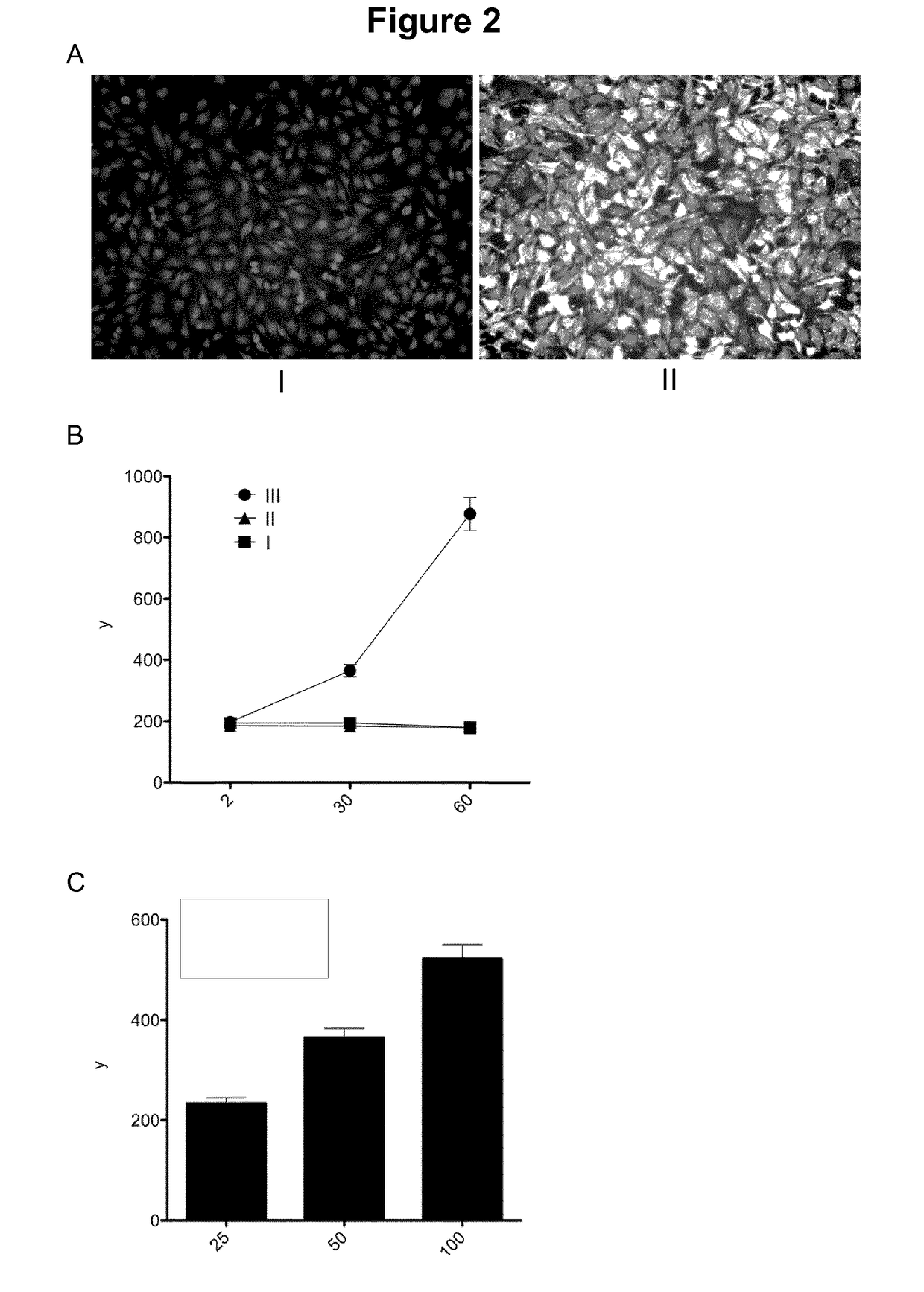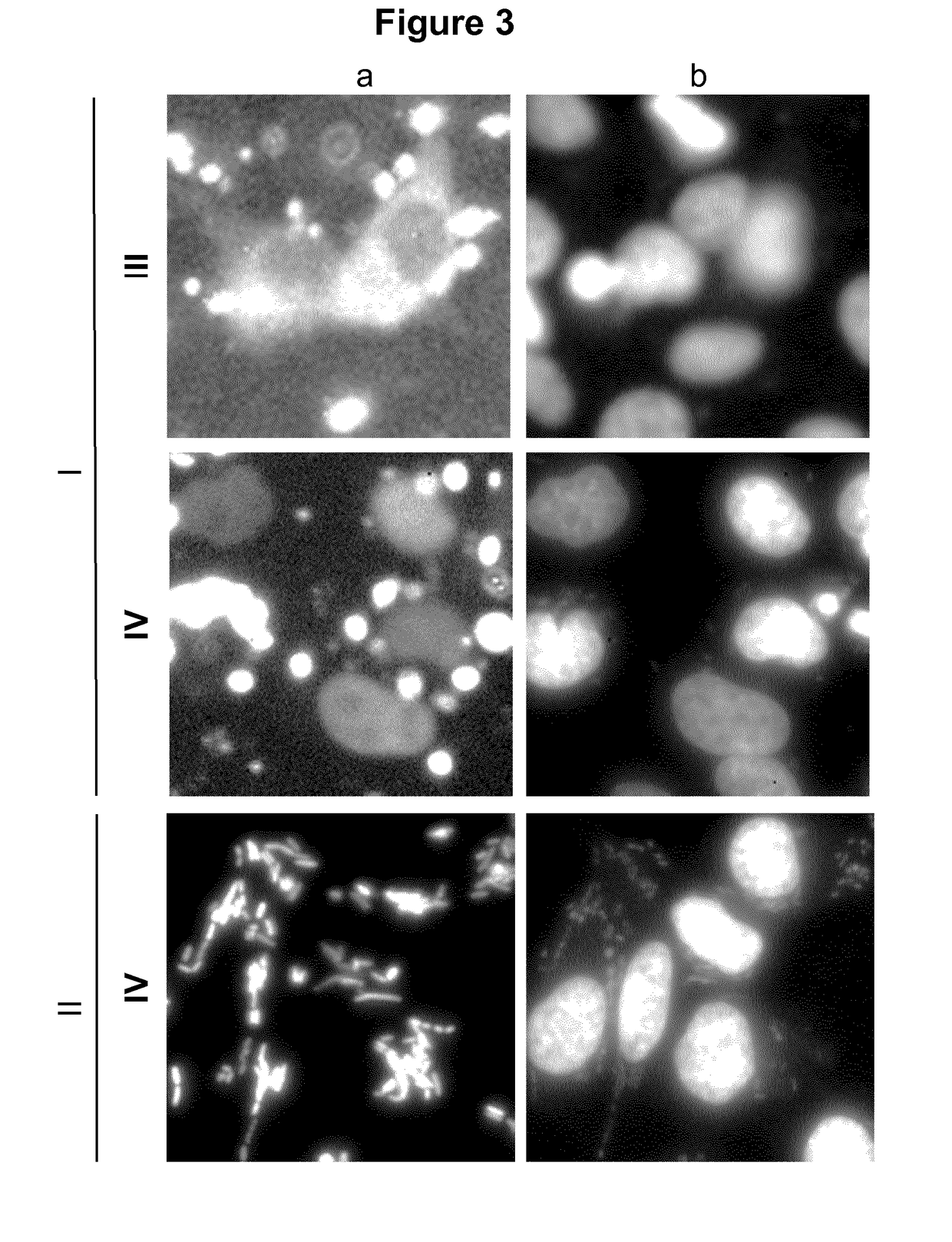Virulence Attenuated Bacteria For Treatment Of Malignant Solid Tumors
a technology of virulence attenuation and malignant solid tumors, which is applied in the field of recombinant virulence attenuated gramnegative bacterial strains for treatment of malignant solid tumors, can solve the problems of complex delivery of therapeutic proteins or peptides, inability to cure patients, and large side effects
- Summary
- Abstract
- Description
- Claims
- Application Information
AI Technical Summary
Benefits of technology
Problems solved by technology
Method used
Image
Examples
example 1
[0236]A) Materials and Methods
[0237]Bacterial strains and growth conditions. The strains used in this study are listed in FIG. 14A to N. E. coli Top10, used for plasmid purification and cloning, and E. coli Sm10λ pir, used for conjugation, as well as E. coli BW19610 [28], used to propagate pKNG101, were routinely grown on LB agar plates and in LB broth at 37° C. Ampicillin was used at a concentration of 200 μg / ml (Yersinia) or 100 μg / ml (E. coli) to select for expression vectors. Streptomycin was used at a concentration of 100 μg / ml to select for suicide vectors. Y. enterocolitica MRS40 (0:9, biotype 2) [17] a non Ampicillin resistant E40-derivate [16] and strains derived thereof were routinely grown on Brain Heart Infusion (BHI; Difco) at RT. To all Y. enterocolitica strains Nalidixic acid was added (35 μg / ml) and all Y. enterocolitica asd strains were additionally supplemented with 100 μg / ml meso-2,6-Diaminopimelic acid (mDAP, Sigma Aldrich). S. enterica SL1344 were routinely grow...
PUM
| Property | Measurement | Unit |
|---|---|---|
| molecular weight | aaaaa | aaaaa |
| molecular weight | aaaaa | aaaaa |
| molecular weight | aaaaa | aaaaa |
Abstract
Description
Claims
Application Information
 Login to View More
Login to View More - R&D
- Intellectual Property
- Life Sciences
- Materials
- Tech Scout
- Unparalleled Data Quality
- Higher Quality Content
- 60% Fewer Hallucinations
Browse by: Latest US Patents, China's latest patents, Technical Efficacy Thesaurus, Application Domain, Technology Topic, Popular Technical Reports.
© 2025 PatSnap. All rights reserved.Legal|Privacy policy|Modern Slavery Act Transparency Statement|Sitemap|About US| Contact US: help@patsnap.com



